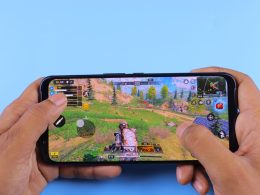Introduction
Mobile games dominate the app stores and generate billions in revenue each year. As we look to 2025, developers must master monetization models that balance player experience with profit. From in-app purchases to subscription passes and ad-driven revenue, the choices are many. New trends like blockchain assets and cloud gaming open fresh paths. In this guide, we break down the top mobile game monetization models to watch in 2025. You will learn how each model works, where it shines, potential pitfalls, and tips for success. Whether you design casual titles or AAA mobile experiences, this article will help you pick the right approach to grow your game’s earnings and keep players happy.
What Are Monetization Models in Mobile Gaming?
A monetization model is the method by which a mobile game makes money. It shapes game design, user flow, and marketing. Pick the wrong model, and players may churn or complain. Choose wisely, and you can build a sustainable revenue stream that funds updates, live events, and new content.
Major models include in-app purchase models, ad monetization, subscription gaming, and hybrid approaches that blend these methods. Emerging trends in 2025 will also factor in blockchain and cloud services. Understanding each model’s mechanics and their fit for your audience is key to long-term success.
In-App Purchases (IAPs) and Virtual Goods

In-app purchases remain the most common revenue driver for mobile games. Players buy virtual goods such as cosmetic items, power-ups, or game currency. The success of free-to-play blockbusters like Candy Crush and Genshin Impact shows the power of IAP.
Standard IAP Mechanics
Standard IAP models let players spend real money on in-game coins, lives, or boosts. These purchases speed up progress or unlock cosmetic content. Developers often offer starter packs at low prices to encourage first buys. Starter packs give more currency per dollar than regular offers, creating a sense of value.
Gacha and Loot Box Models
Gacha mechanics, inspired by Japanese capsule toy machines, let players spend currency for randomized rewards. Loot boxes work similarly. A player pays for a chance at a rare skin or character. When implemented responsibly, gacha can drive high engagement. However, regulators in some regions view loot boxes as gambling, leading to potential restrictions in 2025.
Cosmetic Versus Pay-to-Win
Cosmetic IAPs sell skins, avatars, and visual effects that do not change gameplay. Pay-to-win items offer direct power boosts. By 2025, most top grossing titles avoid pay-to-win to maintain fairness and community goodwill. Cosmetic sales maintain a level playing field while still generating strong revenue.
Ad-Based Monetization

Ads remain a strong revenue source, especially for casual games where players accept occasional commercials. Smart ad integration can boost ARPU without harming retention.
Rewarded Video Ads
Rewarded videos let players watch short ads in exchange for in-game currency or bonuses. This model places choice in the player’s hands. When rewards are meaningful, players happily engage. In 2025, optimized ad networks use AI to match ads to user profiles, boosting completion rates.
Interstitial and Banner Ads
Interstitial ads appear at natural breaks, such as between levels. Banner ads stay on screen but generate lower earnings per impression. Careful pacing of interstitials—such as after every three levels—keeps players from feeling spammed.
Playable and AR Ads
Playable ads offer mini game demos in ad form. They drive high click-through rates and engaged users. Augmented reality ads overlay brand content in the real world via the mobile camera. These immersive formats command premium CPMs in 2025.
Subscription Models

Subscription gaming has climbed thanks to services like Apple Arcade and Google Play Pass. Games also offer their own season passes.
Game Subscription Services
Platforms bundle dozens of games under one monthly fee. Players in 2025 expect an expanding library of ad-free, premium titles and regular new releases. Developers earn revenue per play-time or per download, depending on platform terms.
Battle Pass and Season Pass
Battle passes give players access to exclusive content over a set season. Players pay a flat fee and unlock tiers by completing in-game challenges. This model boosts engagement and predictability of revenue. Successful battle passes often include both free and premium reward tracks to engage all players.
Hybrid Monetization Strategies
Many games combine IAP, ads, and subscriptions for maximum flexibility.
Free-to-Play with Optional Subscriptions
A base game is free with IAP for currency or cosmetics. Players can also subscribe monthly for bonus currency, exclusive skins, and ad removal. This hybrid model appeals to both occasional spenders and committed fans.
Dynamic Pricing and Offers
By 2025, AI-driven pricing adjusts in-game offers based on player behavior. If a player pauses purchases, the game may present personalized discount bundles. Dynamic pricing boosts conversions while keeping players engaged.
Emerging Trends in 2025

The mobile market never sits still. Here are the top new models shaping monetization in 2025.
Blockchain Assets and NFTs
Non-fungible tokens enable true player ownership of in-game items. NFT marketplaces let players buy, sell, and trade unique cosmetics or virtual land. Smart contracts reward players for achievements with tokenized assets. While volatility and regulation remain concerns, early adopters are crafting new revenue streams and secondary markets.
Cloud Gaming and Pay-Per-Play
Cloud gaming lets players stream games instantly. Monetization shifts toward pay-per-play or short-term rentals. Developers can offer premium titles via subscription or micro-payments for daily access. This model lowers download friction and opens up high-end experiences on low-spec devices.
Social Commerce Integrations
In-game shops increasingly link to real-world commerce. Players can buy branded merchandise or event tickets directly within the game interface. Social features let players gift items or share purchases on social feeds. This blend of gaming and e-commerce will expand in 2025.
Ad-Sponsored In-Game Events
Brands sponsor time-limited in-game events, offering branded skins or storylines. Players earn brand-themed rewards by completing quests. This model adds value for players and taps into high CPM ad budgets.
Key Metrics and Best Practices
To succeed, track and optimize these key metrics:
ARPU (Average Revenue Per User) measures revenue divided by total users.
ARPPU (Average Revenue Per Paying User) shows spend per buyer, indicating offer effectiveness.
Conversion Rate reveals the share of players who make purchases after installation.
Retention Rate tracks players returning on day 1, day 7, and day 30.
LTV (Lifetime Value) projects total revenue per user over time.
Use A/B testing to refine pricing, offer placement, and ad frequency. Monitor cohort performance to see how updates impact revenue. Balance monetization with user experience to avoid churn.
Table: Comparison of 2025 Monetization Models
| Model | Primary Revenue Source | Best Use Case | Key Advantage | Main Risk |
|---|---|---|---|---|
| In-App Purchases (IAP) | Virtual goods and currency | Competitive and social games | High ARPPU potential | Player backlash on unfair items |
| Gacha/Loot Boxes | Randomized reward sales | Collection-driven experiences | Strong engagement spikes | Regulatory scrutiny on gambling |
| Ad-Based (Rewarded Video) | Ad impressions and views | Casual and hyper-casual titles | Non-paying user monetization | Ad fatigue and churn risks |
| Subscription (Battle Pass) | Monthly/seasonal fees | Live-service and PvP games | Predictable recurring revenue | Content must justify subscription |
| Hybrid (IAP + Subscriptions + Ads) | Multiple sources | Large-scale free-to-play games | Revenue diversification | Complexity in balancing models |
| Blockchain/NFT | Secondary market sales | Virtual worlds and metaverse | New ownership economy | Market volatility and regulation |
Pitfalls and Ethical Considerations
As you explore monetization, be mindful of these pitfalls:
Ad Overload frustrates users and can hurt retention. Space ads strategically and respect session flow.
Pay-to-Win Designs can drive revenue but alienate players. Focus on cosmetics to maintain fairness.
Loot Box Regulation intensifies. Keep gacha systems transparent and comply with local laws.
Privacy Concerns grow with AI-driven personalization. Be clear on data use and obtain consent.
Balancing Game Economy is crucial. Too much free currency or too many paid items can destabilize progression.
Tips for Mobile Game Monetization Success

To make the most of 2025 models, follow these tips:
Know Your Audience: Conduct player surveys and analyze behavior data to tailor offers.
Start Small: Test one model before adding complexity. Expand to hybrid only after mastering basics.
Optimize Onboarding: Show value early. Offer a low-cost starter pack to new players.
Build Community: Engage players via in-game events and social features to boost retention.
Monitor Trends: Stay updated on regulation, platform policies, and tech breakthroughs.
Conclusion
Mobile game monetization in 2025 offers more choices than ever. In-app purchases, ad models, subscriptions, and hybrid strategies each have their place. Emerging trends like blockchain assets and cloud pay-per-play open new revenue streams. Success depends on matching models to your game type and audience. Track key metrics, test offers, and balance revenue with user experience. Avoid ad overload, pay-to-win backlash, and privacy pitfalls. By staying agile and data-driven, developers can unlock steady growth and satisfied players in the evolving mobile gaming landscape.
Call-to-Action
Ready to level up your game’s revenue? Explore these top monetization models today and choose the strategies that fit your 2025 roadmap!












